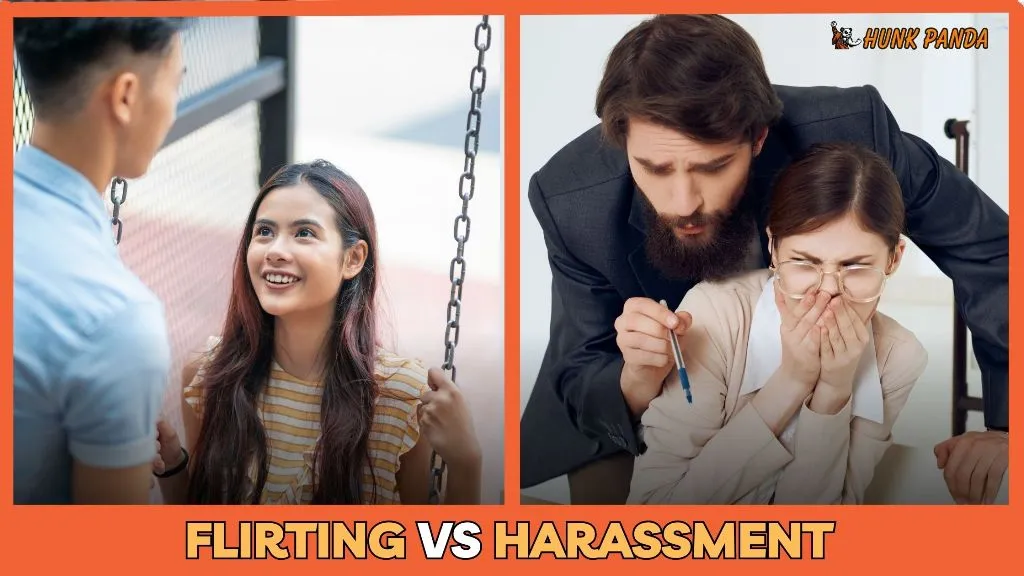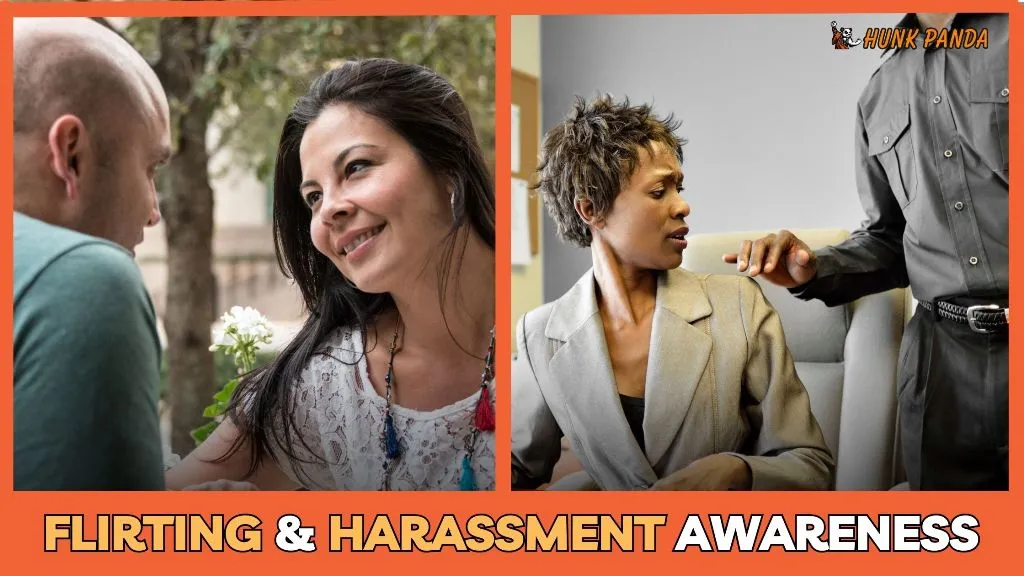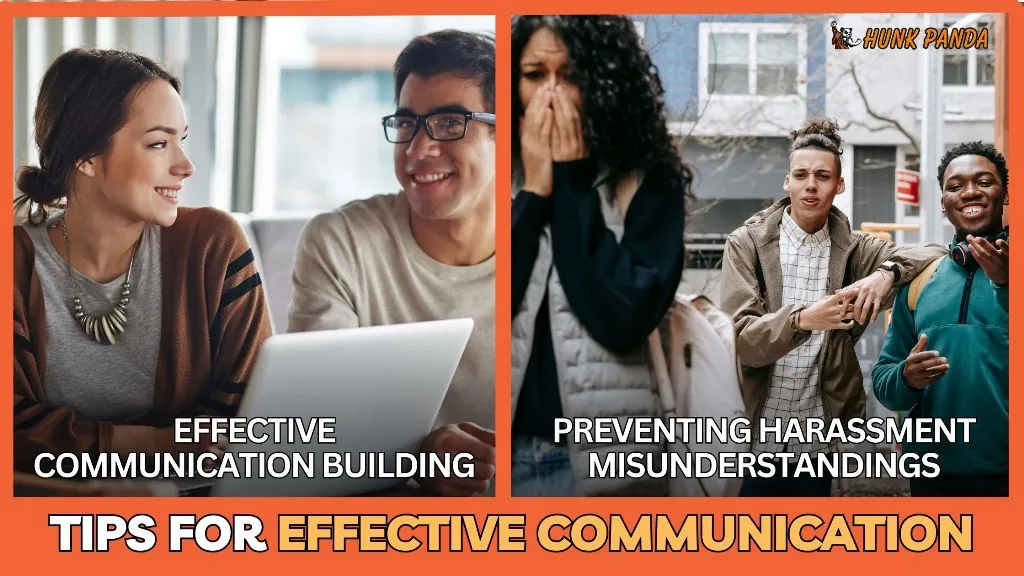The relationship between a boy and a girl is and has always been complex. It has been so because between two heterosexual people attraction always persists. This attraction is conveyed by both genders differently. It could be either done through actions or words. Both sexes need to understand how the attraction is passed on.
One should ask whether the action is suitable to the words said. If they are then it is fine, but if they are not then chances are that the situation might turn out to the wrong way and be a bad experience.
The words we are talking about could be referred to as both flirting and sexual harassment. And when the action is not apt or not as per good intentions of what is said then it turns into sexual harassment again.
Both sexes need to curate boundaries for themselves. They should know to what extent it is sexual flirting and from where someone might harass them.
Between any two people who are bound to feel attraction towards the other person experience flirting and harassment, especially at their workplaces. At workplaces interaction between two people occurs a lot and it is always easy to make the move.
This blog post is aimed to tell you about what actual flirting and harassment are. We will discuss it with examples and scenarios so that you can set your boundaries accordingly.
So, calm yourself and read on!
Defining Flirting and Harassment

When someone is sexually attracted and says that you look beautiful or handsome then that is flirting. Flirting is romantic and social behavior to express attraction towards someone else. This is done by passing compliments, or gestures such as smiling, touching, or just trying to come closer. It is usually done to express sexual or romantic feelings one has for the other the person flirting with. Though, it is not necessary that flirting denotes romantic behavior, it could be merely done playfully.
For this reason, one should understand sexual nature and the culture one comes from and flirt accordingly. In different cultures, there major differences and are varying boundaries considered for sexual advances and those considered sexual harassment. So, always keep in mind the boundaries of the other person and then act.
In flirting there is a loophole, which could be and is used widely by both sexes. That catch is the playfulness. Many would tease and then say they had no serious intention in behind it. One can hold your hand romantically and then say they have no reason for it. But you must understand that any such verbal or nonverbal form of expression does have a reason for it.
Now, if it is not romantic or sexual then it is not a good one. Chances are that one day it will escalate and you would be used to fulfill somebody’s ugly desires.
Harassment is a behavior that is persistent and unwanted to the victim. It could be expressed physically, verbally, or non-verbally. It most cases involves passing hateful comments, speeches, making obscene sexually harassing or obscene remarks, to, beating someone, unwanted touching without consent, etc. One could be harassed at the workplace, any public place, an educational institution, or even at one’s home.
In understanding the difference between flirting and unwanted sexual advances and harassment one should know that consent and mutual participation play a crucial role.
On the one hand, flirting is done playfully and the other person has no problem with it, harassment is done without the consent of the other person, and done to hurt the other person.
In flirting one does it respectfully but harassment. sexual advances is just the opposite of it. Someone molests to humiliate and torment someone.
Another difference is who holds the power. As flirting is a mutual act their power is held by both the parties. In the case of sexual harassment and flirting, the harasser has the upper hand in power and there is an imbalance two different terms of power dynamics.
We can say that the main difference lies in consent. If there is consent then flirting is playful overly friendly and respectful but if there is no consent then it is considered sexual harassment and flirting which is harmful sexual nature.
The Role of Consent and Boundaries in Flirting

In today’s time where bullying, harassment, and hateful speech have become so common consent has become the most important aspect when communicating with the other person. People have turned so vulnerable that the commonest of things that happen if takes place without their consent is they get hurt. So, before reaching out to someone consent is the first thing to reach for. Only, when you have their consent, you can carry on further.
Fundamentally, flirting involves two people who are sexually attracted to one another communicating with one another via both voiced and nonverbal cues positive touching. It could contain lighthearted humor or lively banter to ease the tension, but it’s crucial to keep in mind that both sides need to feel at ease with one another. Flirting ceases to be considered harmless pleasure when it causes discomfort or violates one party.
Regardless of gender or relationship status, consent is essential in every flirty interaction. Before engaging in any physical contact, sexual favors such as touching, kissing, sexual activity, etc., all participants must provide their express consent. Both parties should stop engaging in those activities right once if one or both of them is uncomfortable with certain parts of the encounter.
When flirting, it’s crucial to acknowledge and respect each person’s limits. This goes beyond just getting permission. This entails acknowledging when someone wants more than a casual talk and accepting that desire if it is mutually agreeable. On the other hand, it’s crucial to know when someone is only interested in having a fun conversation; if you push too far, it may make everyone uncomfortable and, if unchecked, might escalate into more severe behavior like harassment or violence.
Understanding permission and establishing boundaries are essential elements of polite flirting, allowing two people to interact amicably while always respecting each other person’s private areas and comfort zones. When done properly, they contribute to the development of a climate in which everyone feels secure enough to express themselves freely without worrying about being exploited or, worse still, drawing unwelcome attention to themselves or another person.
It is crucial to first take into account your sentiments regarding what you are comfortable with before setting someone else’s boundaries. This will enable you to identify potential sources of discomfort or safety for other people. You may use this as a starting point for understanding how the other person may be feeling once you have determined your degree of comfort. To avoid miscommunication about expectations or wants, it is equally essential to communicate freely and explicitly with all parties concerned.
Respecting someone else’s boundaries entails being careful with one’s words, physical touch, and conversational subjects to avoid upsetting or upsetting the other person. Additionally, it entails paying attention when someone communicates their wants or sentiments to guarantee that their voice is heard and respected.
It is crucial to take someone’s expressed worries about breaching their boundaries seriously and to respond to them appropriately with understanding, encouragement, and respect for their feelings and preferences. An atmosphere where everyone feels comfortable and that their boundaries will be respected by those around them is created via respectful communication.
Recognizing Flirting and Harassment in Various Scenarios

As discussed above flirting and harassment could be voiced and mute, it could be done in many places. We now know that there is a very thin line between the two, so it is necessary to recognize them. Below are the ways and places where the two behaviors could happen.
Flirting
Making eye contact, smiling, complimenting, lightly stroking the other person’s arm or shoulder while conversing, lighthearted teasing, and inquiring about their hobbies are all forms of flirting. It’s crucial to remember that flirting should never involve offensive behavior, such as making unwanted sexual advances approaches sending sexually suggestive messages or jokes that might embarrass the other person. Observe the other person flirting with’s body language and behaviors as well; if they show signs of discomfort or indifference, it is advisable to back off and respect their preferences.
However, it must be done in a way that respects each person’s limits and is acceptable. Flirting may be a pleasant and playful way to connect with someone. It’s crucial to watch out for indicators of discomfort if you wish to flirt with someone so that you can change your behavior. Both sides will have a good time as a result, and respect for one another will grow.
Harassment
Harassment on the other side always leaves the victim with the feeling of humiliation. One feels as if one is exploited. Harassment has many types but the most prevalent of them is sexual harassment. Instances of sexually harassing may include making unwelcome advances, improper approaches, exhibiting objectionable information, or using other types of intimidation, such as threats or blackmail.
Other instances include making unwelcome jokes or sending sexually suggestive messages and unwanted, or comments regarding an employee’s gender, physical attractiveness, or sexuality. Additionally, it is unlawful for an employer to frequently subject workers to insults regarding their gender, ethnicity, or religion to foster a hostile work environment. Schools are another setting where harassment could occur.
Examples include sending threatening sexually harassing messages via social media, making obscene remarks, sexually harassing someone based on their ethnicity, gender identity, or ability, spreading rumors about someone, and indulging in cyberbullying (harassment via technology).
Knowing the warning signals makes it easier to spot improper conduct. These might be unsolicited or unwanted sexual advances, jokes or compliments, inquiries about someone’s personal life or looks, persistent demands for dates or other personal information after being told “no” repeatedly, or any kind of physical contact without consent. If they occur frequently or produce an unpleasant or intimidating work atmosphere, any of these actions may be considered harassment. It’s also vital to understand that what one culture would view as normal flirting may be viewed as unacceptable in another.
A nice pat on the back, for instance, could be regarded innocuous in certain cultures but offensive in others since it invades someone else’s personal space. For everyone to feel wanted and know what is expected of them, employers must establish clear distinction about what constitutes suitable demeanor in the workplace. It’s crucial to recognize that not all flirting is improper, in addition to keeping cultural variations in mind while deciding what behaviors are acceptable. Depending on the circumstances, it may frequently be a good method to communicate desire while also maintaining limits. However, crossing certain lines can rapidly turn flirting into something more severe, such as harassment or even violence.
Consequences of Harassment and Reporting

The effects of workplace harassment can be severe, both professionally and psychologically. Professional sanctions from an employer, such as suspension or termination, may be imposed on persons found guilty of harassment. Because harassment is viewed as a form of discrimination and is prohibited in many jurisdictions, this might potentially have legal ramifications. In addition to negative effects on their careers, harassed individuals may experience emotional anguish, which adversely affects their mental health. Anxiety, despair, and post-traumatic stress disorder (PTSD) are possible symptoms for victims. Physical afflictions like headaches or stomachaches might also show these signs. Last but not least, folks who are harassed frequently find it challenging to trust others once more, which may cause them to retreat farther from society.
Why is it important to take action?

Employers must take action to ensure a safe workplace by offering tools like training on what constitutes appropriate conduct at work, an open-door policy that allows workers to report harassment incidents without fear of retaliation, and/or sanctions against offenders. Organizations should also offer victims support services like counseling or therapy sessions with specialists in trauma rehabilitation.
For a woman, it becomes highly important that they report cases of harassment. As they are the ones who face it the most. The way a woman is stalked in a sexual manner makes it difficult for her to focus on her job.
Tips for Effective Communication

Tips for building clear and correct communication:
Avoid using jargon or other sophisticated terms that could mislead the audience by adopting clear, succinct language. To make your point apparent, choose a language that is direct and uncomplicated.
Be precise: To make your point more clear to the audience, give particular instances and specifics. Avoid making ambiguous or broad remarks that can cause misunderstanding.
Use the active voice instead than the passive: The active voice is more direct and clear. Rather than stating that “Mistakes were made,” state “I made a mistake.”
Communication is a two-way process, so pay attention. You must actively listen to the other person’s message to effectively communicate.
Verify that the listener has grasped what you’ve stated once you’ve finished communicating your message. Ask them to recite the message aloud so that you can understand it.
Tips for avoiding misunderstanding regarding harassment:
Clarify your expectations: Establish unambiguous rules and expectations for proper sexual conduct at work. All workers should be made aware of these standards, for example, and you should make sure they are aware of the repercussions for breaking them.
Provide instruction senior staff: Regularly educate people on how to spot and report inappropriate action and how to avoid sexual harassment itself. This can assist staff members in comprehending what conduct is unacceptable and how to react in the event of sexual harassment itself.
Encourage reporting: To ensure that workers feel comfortable reporting occurrences without fear of reprisal, give several reporting channels (such as a hotline, an HR representative, or an online reporting system).
Conclusion
To conclude, we discussed what flirting and sexual harassment are, their key differences, and what could happen if one doesn’t create boundaries for the same. Once you feel happy you have created boundaries then there are lesser chances of getting harassed and humiliated. This would also clear your expectations about flirting and sexual harassment.
Remember that consent holds utmost importance. Before you think of flirting with someone know his\her boundaries and look for voiced and non-verbal gestures that signify that consent has been given.





